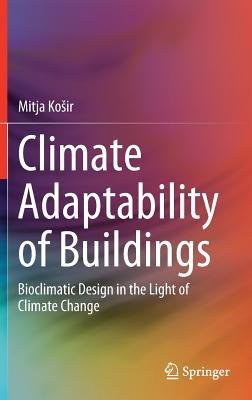
- We will send in 10–14 business days.
- Author: Mitja Kosir
- Publisher: Springer
- ISBN-10: 3030184552
- ISBN-13: 9783030184551
- Format: 15.6 x 23.4 x 1.6 cm, kieti viršeliai
- Language: English
- SAVE -10% with code: EXTRA
Reviews
Description
This book examines bioclimatic design with a focus on the application of climate adaptability in the design of future buildings and renovation of existing energy-efficient buildings. It addresses the challenge of how to construct and renovate buildings so that they maintain desired performance even as the climate changes in future decades. The book is divided into six chapters that guide the reader from basic concepts to discussions on specific aspects of bioclimatic design, including:
- Why do we construct buildings and why do they matter?
- Where should we get started with bioclimatic design?
- The opportunities and potential held by climate for the by bioclimatic architecture and design.
- How and why should we design bioclimatic buildings to accommodate future climatic conditions?
- Climatic changes and implications for the bioclimatic design of buildings.
The author presents an overview of effective bioclimatic design strategies that enable climate-adaptable buildings. He also addresses the problems of designing with climate, which are relevant for all types of building design--in particular, the implications for bioclimatic buildings that are intrinsically connected to the climate they were adapted to. The book combines representative examples, diagrams, and illustrations, and concludes each chapter by reviewing the most important findings and concepts discussed.
EXTRA 10 % discount with code: EXTRA
The promotion ends in 23d.00:32:59
The discount code is valid when purchasing from 10 €. Discounts do not stack.
- Author: Mitja Kosir
- Publisher: Springer
- ISBN-10: 3030184552
- ISBN-13: 9783030184551
- Format: 15.6 x 23.4 x 1.6 cm, kieti viršeliai
- Language: English English
This book examines bioclimatic design with a focus on the application of climate adaptability in the design of future buildings and renovation of existing energy-efficient buildings. It addresses the challenge of how to construct and renovate buildings so that they maintain desired performance even as the climate changes in future decades. The book is divided into six chapters that guide the reader from basic concepts to discussions on specific aspects of bioclimatic design, including:
- Why do we construct buildings and why do they matter?
- Where should we get started with bioclimatic design?
- The opportunities and potential held by climate for the by bioclimatic architecture and design.
- How and why should we design bioclimatic buildings to accommodate future climatic conditions?
- Climatic changes and implications for the bioclimatic design of buildings.
The author presents an overview of effective bioclimatic design strategies that enable climate-adaptable buildings. He also addresses the problems of designing with climate, which are relevant for all types of building design--in particular, the implications for bioclimatic buildings that are intrinsically connected to the climate they were adapted to. The book combines representative examples, diagrams, and illustrations, and concludes each chapter by reviewing the most important findings and concepts discussed.


Reviews